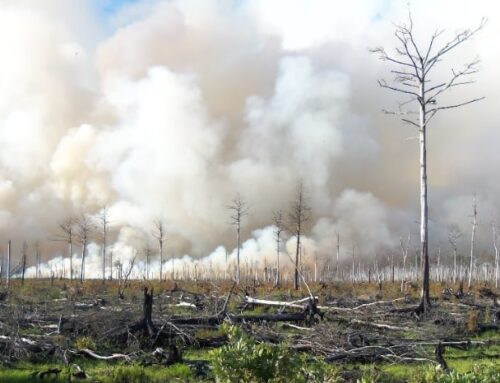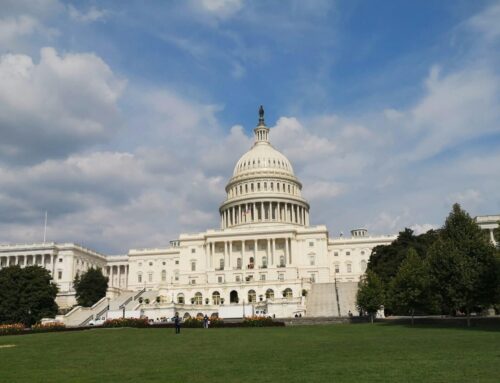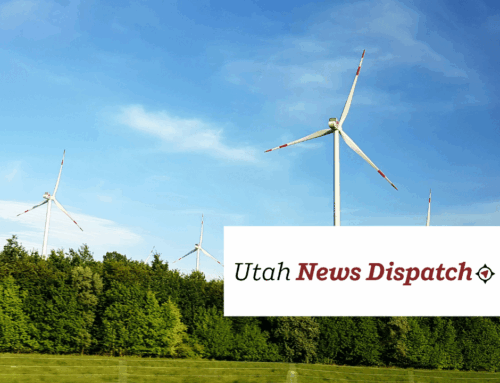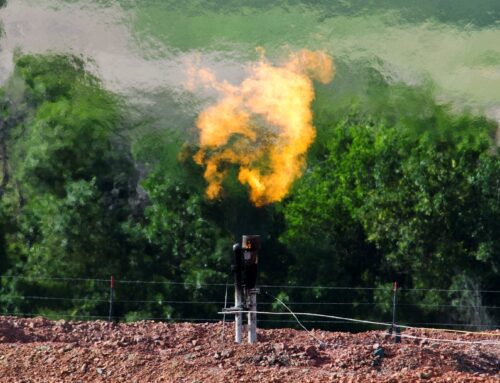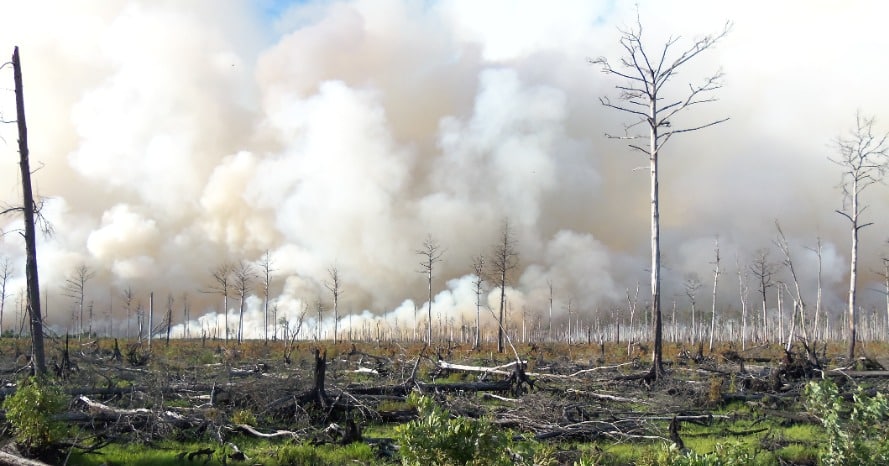On November 19, the Senate Committee on Energy and Natural Resources passed 75 bills, including several addressing federal wildfire policy and forest management. The markup covered a wide range of topics, from adding land to the National Park System and renaming visitor centers to modifying revenue distribution from offshore energy development and increasing the Department of Energy’s use of artificial intelligence. Chairman Manchin emphasized that these bills should form the foundation of a public lands package to be voted on before Congress adjourns.
The committee quickly agreed to 52 amendments and passed 70 bills en bloc by voice vote. Five additional bills were discussed and agreed to by roll call vote. Among the 70 bills passed en bloc were several addressing federal wildfire policy and spending (see summaries below).
The frequency and intensity of wildfires in the United States is increasing. Over the past decade, wildfires have burned an annual average of 7.0 million acres—more than double the 3.3 million acres burned annually in the 1990s. Federal spending on wildfire response has grown significantly to meet this challenge. Between FY2015 and FY2024, TCS catalogued $59.7 billion in appropriations for wildfire-related programs and an additional $875 billion in funding for programs that likely intersect with federal wildfire policy. These figures include billion-dollar investments from the Infrastructure Investment and Jobs Act (IIJA) and the Inflation Reduction Act (IRA).
In addition to new funding, Congress has pursued policy reforms to better protect communities from wildfire. Last fall, the inter-agency Wildland Fire Mitigation and Management Commission, established in the IIJA, issued a report with 148 recommendations to improve federal wildfire mitigation and management efforts.
Congress has responded with a flurry of proposed legislation to tackle the wildfire crisis—some of which incorporate the Commission’s recommendations. Several of these bills were passed by the Senate Committee on Energy and Natural Resources.
Some bills address wildfire mitigation and post-fire restoration activities, which could reduce risks and lower suppression costs in the long run. Historically, funds for non-fire programs have been diverted to cover increasing wildfire suppression costs, hindering vital forest health and restoration work. The U.S. Forest Service found that from 1995 to 2015, wildfire spending more than tripled from 16% to 52% of the agency’s budget. Dedicated funding for mitigation and recovery activities is essential to address risks and reduce costs in the future.
However, not all hazardous fuel reduction activities provide equal taxpayer benefits. Some initiatives, such as subsidies for timber harvesting, may misalign with wildfire mitigation needs or undermine forest health, potentially increasing fire risk. Cost-effective strategies like prescribed burns and managed natural burns can reduce hazardous fuels while benefiting ecosystems and protecting communities when implemented correctly.
Other bills would improve inter-agency and inter-governmental cooperation, which is essential, as wildfires affect federal, state, and private lands. The National Prescribed Fire Act of 2024, for example, would improve coordination with the Environmental Protection Agency and local air quality agencies on smoke management policies, establish a task force to support cross-boundary prescribed burns, and convene a conference to encourage states to implement liability protections.
Transparency and accountability are vital to ensuring federal wildfire programs protect communities and use taxpayer dollars wisely. Bills like the Promoting Effective Forest Management Act of 2023 and the Western Wildfire Support Act of 2023 would mandate additional reporting on wildfire spending and performance metrics. Improved metrics and evaluation criteria would help policymakers identify gaps and allocate funds more effectively.
Summary of Bills Addressing Wildfire (as reported to the Senate 11/19/24)
- Introduced by Sen. Cortez Masto (D-NV)
- The bill would mandate the use of spatial fire management plans, direct wildfire-related research, and authorizes a maximum of $100 million annually to USFS for post-fire rehabilitation activities, among other things.
- Specific elements of the proposed bill include:
- Detail Report: More detailed reporting requirements for USFS wildfire spending, including analysis of the costs and behavior of catastrophic wildfires
- DOD Reimbursements: Reimbursing states for fires caused by the Department of Defense activities
- Spatial Fire Management Plans: Require spatial fire management plans every 10 years and be consistent with resource management plans
- Research: Require studies on firefighter training gaps, unmanned aircraft system fire applications, impact of drone incursions on wildfire suppression, and modernizing wildfire technology (e.g. communication infrastructure, situation awareness tools, predictive modeling)
- Wildfire Detection Equipment: Increase the use of sensors, cameras, and other wildfire detection equipment on federal land
- Slip-on Tanker Units: Make tribes eligible for the cost-share grant program for slip-on tanker units established in the IIJA
- Expanding Existing FEMA Programs: Add recovery as a qualifying activity for the FEMA disaster preparedness program and makes information on federal support for disaster recovery more accessible
- Burned Area Emergency Response Team: Create a permanent Burned Area Emergency Response Team(s) to coordinate immediate post-wildfire recovery efforts
- New Long-Term Burned Area Recover Account for USFS: Authorize $100 million in annual appropriations to USFS for post-fire rehabilitation projects on federal land. The DOI has an existing Burned Area Recovery account, which received $10 million in appropriations in FY2024.
- Invasive Species Research: Fund a competition for wildfire-related invasive species reduction
S.2151 – Utah Wildfire Research Institute Act of 2023
- Introduced by Sen. Lee (R-UT)
- The bill would establish a Southwest Ecological Restoration Institute in Utah to study and promote restoration-based hazardous fuel reduction treatments. Institutes currently exist in Arizona, New Mexico, and Colorado.
S.2132 – Catastrophic Wildfire Prevention Act of 2023
- Introduced by Sen. Lee (R-UT)
- The bill would establish a pilot program to research and establish a historical stand density index—estimate of the naturally occurring or ecologically balanced stand density index of a forest—in at least one area of each National Forest region (there are 9 total) and use it as a benchmark for hazardous fuels treatment, which include mechanical treatment, stewardship projects, restoration, timber harvesting, and other forest stand improvement activities.
S.2867 – Promoting Effective Forest Management Act of 2023
- Introduced by Sen. Barrasso (R-WY)
- The bill would set annual mechanical thinning targets for public lands, require USFS to use previously authorized categorical exclusions, mandate additional reporting wildfire-related activities, and increase firefighter pay/benefits, among other activities.
- Specific elements of the proposed bill include:
- Mechanical Thinning Requirements: Establish annual mechanical thinning targets for the National Forest System land and public land based on the average acres of public landed mechanically thinned between fiscal years (FYs) 2019 and 2023.
- FY2025-26: not less than the avg. mechanically thinned FY2019–23
- FY2027–28: not less than 20% more than the avg. mechanically thinned FY2019–23
- FY2029 and after: not less than 40% more the avg. mechanically thinned FY2019–23
- Public Lands Reporting: Require reporting on the number of acres treated from funding in the IIJA, the net forest carbon balance per USFS region, and the timeline to address the backlog of land and resource management plans.
- Updated Metrics: Require USFS and DOI to report to Congress on existing key performance indicators and potential outcome-based performance measures
- Transmission and Distribution Facilities & Hazardous Trees: Increase their ability to remove trees within 50 feet of an electric power line, among other changes
- Mechanical Thinning Requirements: Establish annual mechanical thinning targets for the National Forest System land and public land based on the average acres of public landed mechanically thinned between fiscal years (FYs) 2019 and 2023.
- Timber Sale: Raise the threshold necessary to advertise a timber sale on federal lands from $10,000 to $50,000
- Categorical Exclusion for High Priority Hazard Trees: Max 3,000-acre categorical exclusion for pruning, felling, and disposal of high priority hazard trees, defines as likely to fail and cause damage and within 300 feet of a National Forest Service road
- Civil Action: Allow local governments and tribes to intervene in civil action related to a wildfire, insect, or disease reduction project or timber revenue harvest project on federal lands
- Grazing For Wildfire Mitigation: Increase opportunities to utilize grazing for wildfire mitigation through targeted grazing, including the use of temporary permits.
- Break-In-Service for Firefighter: Ensure federal firefighters do not forfeit retirement for voluntary break in service of not more than 24 months of total time, including applying retroactively to service after October 1, 2003.
- Increase Affordable Housing for Firefighters: This includes stricter maintenance standards for rental housing and a temporary rental cap of 30 percent of the pre-tax salary of firefighters.
- Use of Categorical Exclusions (CEs): USFS can use not fewer than 1 of the following authorities for environmental review in the next 3 years: Collaborative restoration CE, Wildfire resilience CE, greater sage-grouse and mule deer CE, fuel breaks CE, emergency action CE, and 20-Year Stewardship Contracting
- New Technology Pilot Program: Establish a deployment and testbed pilot program for wildfire prevention, detection, communication, and mitigation technologies – annual report with recommendations
- Introduced by Sen. Wyden (D-DO)
- The bill would require the government to use prescribed fires on an increasingly large number of acres and modify policies that make it easier to conduct prescribed fire at the federal and local level.
- Specific elements of the proposed bill include:
- Funding for Prescribed Fire: USFS and DOI can use up to 15% of appropriations for hazardous fuels management to conduct prescribed fires, including preparation and post-prescribed fire monitoring.
- Prescribed Burn Mandate: Require the USFS and BLM to increase the acreage burned by prescribed fires by 10% every year for 10 years
- Collaborative Prescribed Fire Program: Create a program to conduct prescribed fires on forested federal land, may use $10 million annually to carry out the program and provide $20 million annually to projects
- Prescribed Fire Agreements/Contracts: Enter cooperative agreements or contracts with State, Tribe, county, fire district, NGOs, or private entities to conduct prescribed fire on federal land
- Hazard Pay: Give hazard pay for all employees of any classification conducting a prescribed fire and study other potential pay incentives
- Recruitment Programs: Create recruitment programs for formerly incarcerated, veterans, seasonal employees, and other underrepresented groups.
- Cross-Boundary Prescribed Fires: Establish a task force to support prescribed fire across ownership boundaries
- Prescribed Fire Training: Create prescribed fire training programs—including a virtual center and a center for Indigenous led prescribed fire and cultural burning—reduce the time required to be eligible for a supervisory role for a prescribed fire and better include non-federal firefighters in resource ordering processes.
- Prescribed Fire indemnity: Grant indemnity to individuals and entities for prescribed fires on federal land or under federal jurisdiction and host a conference to encourage states to implement similar liabilities protections
- Prescribed Fire Claims Fund: Conduct a study of a national prescribed fire claims fund
- Air Quality: Coordinate with EPA and local air quality agencies to more easily allow the use of prescribed fire (Clear Air Act exceptional event demonstrations), promote smoke management practices, and increase education
- Federal Prescribed Fire Plans: Develop landscape-scale prescribed fire plans
- Prescribed Fire Education: Carry out a national prescribed fire education program
- Annual Reporting: Provide financial assistance to states to report prescribed fire accomplishments
- Like many of the other bills passed by the committee, the National Prescribed Fire Act of 2024 was significantly modified during the markup. A summary of the bill as introduced is available here.

